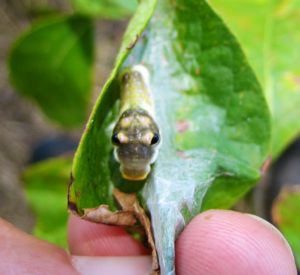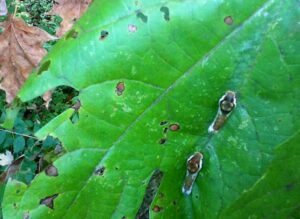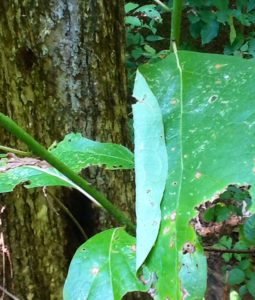By Wren Smith
 Learning to see involves knowing how and where to look. It requires developing a mental template, or the term I prefer, a searching image. I started to understand this concept decades ago while trying to find shark teeth on an island off the Georgia coast. Although this particular beach was known to have shark teeth in abundance, I looked for days without success. Then finally, I saw the shining curve of gray black enamel in the oatmeal-colored sand. Soon afterwards, I had a whole cup full of shark teeth. I had learned to see them in the the context of their surroundings. I now had a relational image planted firmly in my head – a searching image, which allowed shark teeth to emerge from what appeared to be ordinary sand. I had learned to see what I’d been missing. For me, part of being a naturalist and an interpreter is discovering and sharing plants, animals, clues, systems and even history hidden in plain sight.
Learning to see involves knowing how and where to look. It requires developing a mental template, or the term I prefer, a searching image. I started to understand this concept decades ago while trying to find shark teeth on an island off the Georgia coast. Although this particular beach was known to have shark teeth in abundance, I looked for days without success. Then finally, I saw the shining curve of gray black enamel in the oatmeal-colored sand. Soon afterwards, I had a whole cup full of shark teeth. I had learned to see them in the the context of their surroundings. I now had a relational image planted firmly in my head – a searching image, which allowed shark teeth to emerge from what appeared to be ordinary sand. I had learned to see what I’d been missing. For me, part of being a naturalist and an interpreter is discovering and sharing plants, animals, clues, systems and even history hidden in plain sight.
Later I developed a searching image for many things, including caterpillars. I discovered I could spot them hiding in a curled up leaf, or busily munching away in the midst of a canopy of munched leaves. I even learned how to find caterpillars by looking for caterpillar poop, or as entomologists call it, frass. My ability to see these signs began when I spotted my first spicebush caterpillar many years ago while examining leaves of a sassafras tree (the other host plant for this species). What a shock it was to see a “bird dropping” moving silently across the leaf! I soon learned that this ingenious disguise belonged to the larva (caterpillar) of a spicebush swallowtail butterfly. This strange creature was an early stage, or instar, of its development.
I took some fresh sassafras leaves and the caterpillar home to raise. As I fed it, the caterpillar grew and molted – leaving behind its ‘bird dropping’ disguise. It then took on the appearance of a small green dragon sporting huge eye spots on its anterior. When alarmed, this caterpillar can puff up this portion of its body to resemble a snake. This provides some protection, as hungry birds often look elsewhere for dinner. After a few days and several batches of fresh sassafras leaves, the caterpillar in my care molted a few more times, and spun a chrysalis. In less than a month this chrysalis hatched into the large and lovely spicebush swallowtail butterfly. After watching this metamorphosis I was hooked! I began raising caterpillars regularly. I learned how to see much of what I’d been missing.
Knowing that spicebush and sassafras are plentiful on the Bent Twig Trail, I paid extra attention  to these native trees on my walk today. Sure enough, I was rewarded by finding these little spicebush caterpillars on a sassafras leaf. As you can see from the photo they are still in the bird dropping instar. Remember, you can also discover these caterpillars on spicebush leaves.
to these native trees on my walk today. Sure enough, I was rewarded by finding these little spicebush caterpillars on a sassafras leaf. As you can see from the photo they are still in the bird dropping instar. Remember, you can also discover these caterpillars on spicebush leaves.
At Bernheim you will often find many Volunteer Naturalists dedicated to helping others see what may have been hidden. Many of them are on hand during ECO Kids Saturdays (the first and third Saturday of each month from 1:00 p.m. – 4:00). One, Corinne Mastey specializes in helping others see caterpillars, chrysalis, cocoons and even the host plants for their larva, and the preferred nectar sources for the butterflies. If you want to develop more searching images for insects and their relatives, and wish to see what might be hidden in plain site, join Corinne and other Bernheim Volunteer Naturalists for BugFest on Saturday, September 19, 9 a.m. – 4 p.m. Who knows what surprises your backyard and neighborhood might yield, once you learn to see, by learning how and where to look?
Want more Tales from Bent Twig? Click here to view the archive.

